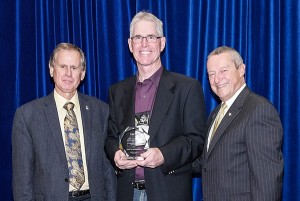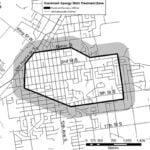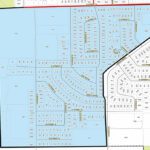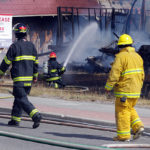Home »

McCormick optimistic about 2017
By Nowell Berg
Though its not his propensity to look backward, City of Kimberley Mayor Don McCormick said, “At this time of year it’s important to stop and really understand what went well this past year.”
The mayor took time for a wide-ranging and candid interview regarding city highlights and challenges from 2016, and a look ahead to 2017. In no particular order, he raised a number of items that significantly impacted Kimberley during the past year.

It’s not something citizens like to hear, but the mayor led with property taxes and specifically the Municipal Price Index (MPI).
For the second year, the MPI was used to establish the amount of increase in residential property tax. The city finance department uses a basket of cost items that the city has no control over. For example, electricity rates, insurance, maintenance and capital costs. The MPI is being used in order to eliminate the “randomness” of setting tax increases.
All property tax increases are now based on the MPI which is, year over year, just over two per cent. The 2017 property tax rate increase will be 2.02%, plus whatever council sets for service increases.
Next the mayor pointed to the new four-year labour contract with city employees. He said it “reflects the affordability from the city’s point-of-view and recognizing our employees need to be keeping up, at a minimum, with the pace of inflation.”
The new contract gives the city labour cost certainty for the next three years (2016 being the first year of the contract).

The Mark Creek flume rehabilitation and Gerry Sorensen Way road rebuild were large infrastructure projects for the city.
“Both [were] huge projects that changed the face of the community in a very positive way. Half of the combined cost of $12 million was covered by federal and provincial grants,” McCormick said.
Mark Creek was brought back to a “natural state” which has made it a really important part of the downtown area. The road re-build makes an integral part of the community easily accessible.
“Just about everybody you talk to, whether visitors or people from Cranbrook or the region are amazed at the revitalization of the Platzl,” McCormick said, adding, downtown revitalization is due “entirely to the leadership of retail entrepreneurs.”
He gives them full credit for doing “an amazing job bringing the downtown back to life.
“We’ve had an amazing year with respect to people moving to Kimberley,” the Mayor enthused. Building permit values are up $3 million over 2015. As of the end of November, 31 building permits were issued for new dwelling construction, 25 of them new single-family homes. Also in 2016, 52 existing single-family homes were renovated.
“We’ve been increasing [the value of building permits] at a rate of $3 million per year for the last three years which is pretty phenomenal,” said McCormick.
The mayor believes this type of growth is sustainable and could likely increase in 2017. He suggested the only thing that might slow growth is the lack of developed land for residential homes and new businesses, but the Official Community Plan will take care of that.
The Cranbrook Kimberley Development Initiative (CKDI) really came to “fruition this year,” said the mayor. The business communities of both towns put up $250,000 to “promote the region as business friendly and attractive to business.”
Columbia Basin Trust (CBT) matched those dollars, so the CKDI has half a million dollars to work with. The first major promotion campaign rolls out early in 2017.
The Inter-Community Business License (ICBL) should make it easier for businesses to do well in both communities. The CKDI and ICBL are part of a five-year strategy designed to attract new businesses and well-paying jobs along with growing the industrial tax base in both cities.
When asked about city council’s licensing of a second cannabis dispensary for Kimberley, McCormick said, “We consider the Tamarack dispensary to be a real success.”
The new dispensary will compliment the Tamarack facility, which focuses on chronic pain management. The new dispensary will focus on “auto-immune disease like cancer, MS, ALS where medical cannabis has proven to be effective,” said the mayor. He expects the second dispensary will operate like the Tamarack facility.
 Last but certainly not least is the SunMine project. While it’s been in operation for 18 months, the mayor pointed out, “The awards keep coming.” The city received three awards in 2016: The Sustainability Award from the Association of Professional Engineers and Geoscientists of BC; The National Award for an Engineering Project or Achievement from Engineers Canada; The Collaboration Award – Community Energy Association Climate & Energy Action Awards.
Last but certainly not least is the SunMine project. While it’s been in operation for 18 months, the mayor pointed out, “The awards keep coming.” The city received three awards in 2016: The Sustainability Award from the Association of Professional Engineers and Geoscientists of BC; The National Award for an Engineering Project or Achievement from Engineers Canada; The Collaboration Award – Community Energy Association Climate & Energy Action Awards.
The SunMine is also up for a 2017 Award as one of 15 projects selected from across Canada by Clean50 for “outstanding contributions to clean capitalism.”
For McCormick, the significance is not the awards or the ‘mine’, but the positive “public relations that happen each time we receive one of these awards.” Tourism feedback suggests people are traveling to Kimberley, not only to see the SunMine, but to visit the community that’s “taken it upon themselves to do such an innovative project.”
The mayor said SunMine has played a significant roll in changing the perception of the city. Not long ago, Kimberley was a mining town struggling to survive the Sullivan closure. Now it’s perceived as a community that is “progressive, innovative and full of vitality.”
The impact of SunMine has “exceeded anybody’s expectations for the impact it has on Kimberley and the economy.”
Kimberley’s Future
 Part of city council’s five-year strategic plan is to build a business park near SunMine that would house companies attracted to the area through CKDI campaigns. The idea is to have the park powered completely with electricity generated from SunMine.
Part of city council’s five-year strategic plan is to build a business park near SunMine that would house companies attracted to the area through CKDI campaigns. The idea is to have the park powered completely with electricity generated from SunMine.
“I think that will be very attractive to businesses that want to be part of this clean energy movement that is in full swing right now,” said McCormick.
City council has instructed city staff to “pursue opportunities for the sale of the Kimberley Athlete Training and Conference Centre and SunMine.”
Proceeds from these sales will be used to build up the city’s infrastructure reserve fund, which is targeted at water, sewer and road rebuilding.
The SunMine sale may seem a bit odd given all of the positive impact it has brought, however, the mayor points out the city has always treated SunMine as a pilot project. Its future growth depends on having an owner with deep pockets that can grow the generating capacity from the current 0.22MW to 15MW; enough to power the proposed business park.
Early in the New Year, the Official Community Plan (OCP) will be completed which will allocate land for industrial use and future residential growth.
This upcoming year will also see council make a decision on the proposed Kimberley Crossing, a seniors assisted living facility in Marysville. Council is currently waiting on approval from the Ministry of Transportation and Infrastructure (MOTI) before making a decision.
The real challenge in 2017 is the “balancing of the level of service that we provide in all areas with the cost of infrastructure renewal and reasonable levels of taxation,” said the mayor.
Initially when asked if he would run in the next municipal election, McCormick said it was too early for him to make that decision.
Upon reflection, McCormick said, “I’m running in the next election. I’m part of several projects that will take more than one term to complete.” He pointed to the CKDI initiative that needs “consistent work” over the next five years or so. Linked to that is the expansion of SunMine and development of the neighbouring business park that will “take some time.”
McCormick enthusiastically concluded, “I’m in it for the long-haul.”







